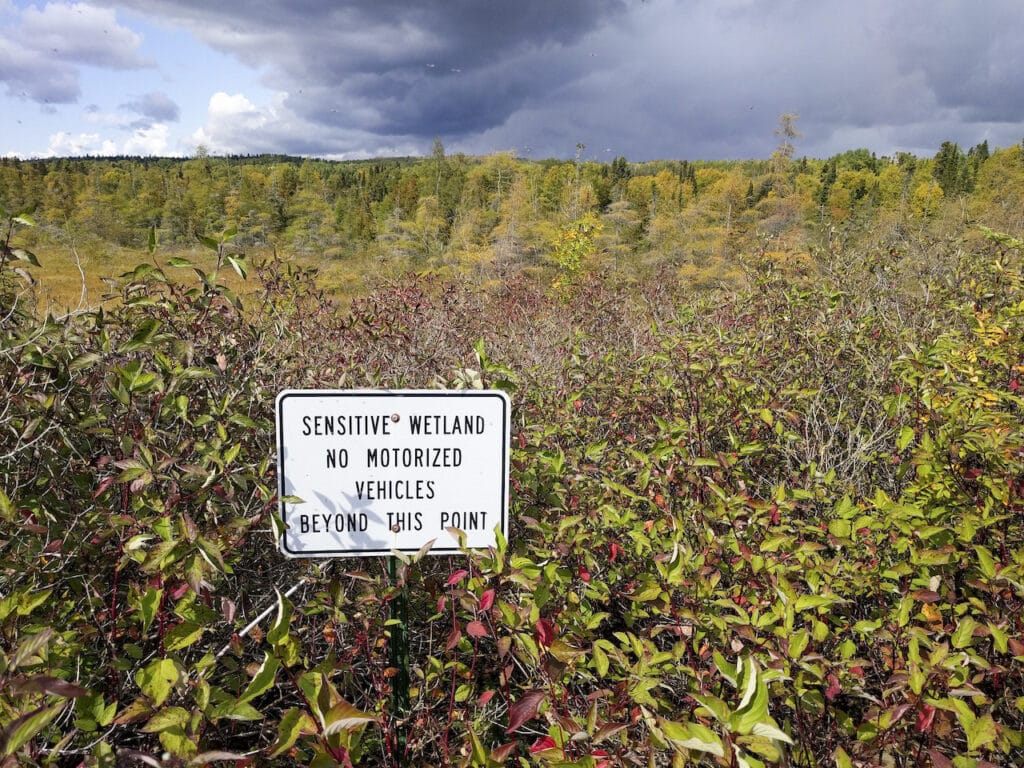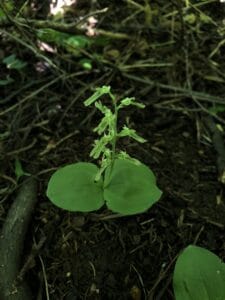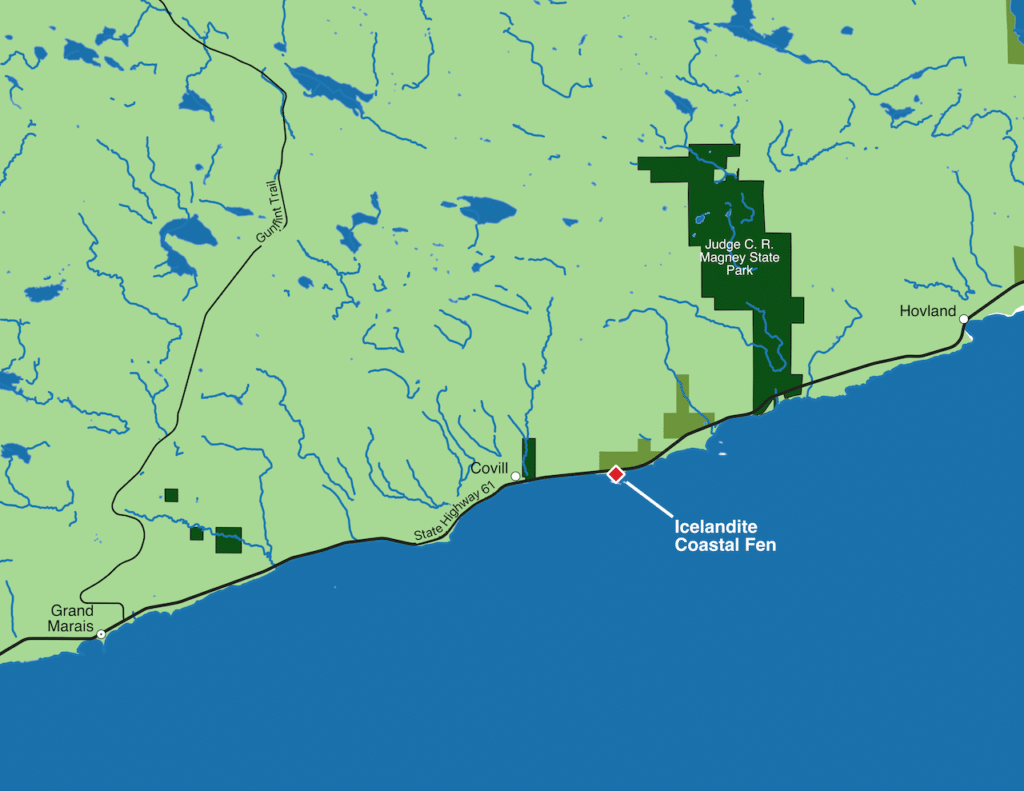
Twenty-five acres of wetlands on the shores of Lake Superior in Cook County, MN should soon be permanently protected as a Scientific and Natural Area. The Cook County board of supervisors voiced its approval last week for the Department of Natural Resources to acquire the parcel from the Department of Transportation.
The Icelandite Coastal Fen is a rare habitat type, one of only a few coastal wetlands along Minnesota’s North Shore, and one of two fens found on the coastline. Fens are groundwater-fed bogs that accumulate peat, and take thousands of years to form. “Icelandite” refers to the site’s bedrock, which is a relatively uncommon type of igneous rock for Minnesota. The area also includes a Lake Superior beach of rounded pebbles, and a beach ridge formed by storm waves about 100 feet from the shore.
“I want to thank you for protecting the fen, I’ve had an opportunity to visit there, be introduced to it a number of years ago, and it’s just a very, very special place,” said commissioner Ann Sullivan. “I’m so glad it’s going to now be at a different level of protection.”
The site is located on a point of land jutting into the lake, about 10 miles east of Grand Marais. The Superior Hiking Trail’s “Lake Walk” section, which travels right on the shore of Lake Superior, also crosses the area.

(Andrew Lane Gibson/iNaturalist)
The area is also home to several rare plant species, including auricled twayblade (Listera auriculata), an orchid which has been found in only nine other places in Minnesota, and is listed by the state as endangered.
“A robust population requires specific conditions like those which prevail at this site thanks to the protection of the beach ridge and the proximity of the standing water in the wetland,” the DNR says. None of the other known populations of the plant are protected in an SNA yet.
Scientific and Natural Areas are state-designated areas that feature significant plants, animals, and other unique natural resources.
“They protect the crown jewels of natural places in the state,” program director Molly Roske told the Cook County board.
SNAs are open to the public, but use is restricted to activities that don’t threaten sensitive species, such as birdwatching, nature photography, and hiking. Camping, collecting, geocaching, rock climbing, and motorized vehicles are prohibited. Because of the Superior Hiking Trail, the site will be exempted from one standard SNA rule: no dogs. Dogs on leash will be allowed to continue walking on the section of trail that crosses the new SNA.

The DNR has been attempting to acquire the site from the Department of Transportation since 1998, but has been stymied by “internal intricacies.” Now, the deal appears close to done, thanks to federal funding from the Great Lakes Restoration Initiative. The DNR will pay the Department of Transportation $300,000 for the parcel.
The SNA would be the seventh in Cook County. Cook County resident and retired Minnesota Biological Survey botanist Chel Anderson was reportedly instrumental in moving the designation forward. The resolution to approve the SNA passed by a vote of 4-1. Commissioner Stacey Hawkins voted against it over concerns about the restrictive rules that are implemented to protect natural features. The DNR expects to complete the acquisition in December or early next year.
More information:
- Cook County approves new Scientific and Natural Area near Lake Superior – WTIP
- Minnesota Scientific and Natural Areas – MN DNR

